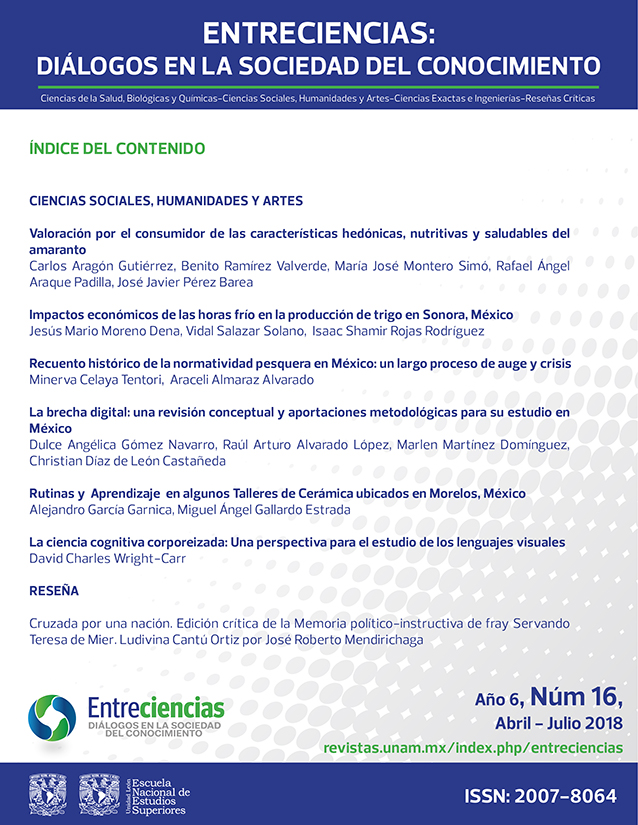Embodied cognitive science: A perspective for the study of visual language
Main Article Content
Abstract
The theoretical foundations that have traditionally been used in the study of visual language are often related to perspectives and concepts that do not hold up well in the light of recent advances in the cognitive sciences, particularly the emerging paradigm of embodied cognition. In this paper, I present a preliminary review of the essential concepts of this paradigm with suggestions for its application to the study of visual communication systems. These concepts include: cognition, embodiment, enaction, embedded cognition, extended cognition, the affective dimension, socially situated cognition, and embodied simulation. I then describe several cases in which this paradigm has been applied in my work as a facilitator of learning and as a researcher. Finally, I sketch out an agenda that will permit us to comprehend in a deeper manner the use of visual signs for the communication of our experiences taking into account that cognition emerges from the dynamic interaction of biological organisms with their environments. Additionally, in the case of human beings, these include a sociocultural dimension, in which we weave complex systems of symbolic meaning.
Downloads
Article Details

Entreciencias: Diálogos en la Sociedad del Conocimiento recognizes and respects the moral rights of authors as well as ownership rights transferred in non-exclusivity to the journal for its open access dissemination and its preservation. Hence, authors who publish in this journal accept the following conditions:
- Entreciencias: Diálogos en la Sociedad del Conocimiento from Universidad Nacional Autónoma de México is distributed under a Licencia Creative Commons Atribución-NoComercial-SinDerivar 4.0 Internacional, which allows the information and metadata to be used without commercial ends as long as proper citation is utilized.
Authors will have the right to non-exclusively distribute the contribution made to Entreciencias: Diálogos en la Sociedad del Conocimiento. That is, they will be able to include it in an institutional repository or disseminate it in other digital or printed media as long as it is explicitly stated that it was first published in Entreciencias: Diálogos en la Sociedad del Conocimiento. The following information must additionally be included: author, year, volume, page numbers, electronic paging, and DOI.
Authors, whose publications have been accepted, will have to send the Letter of Copyright Transfer in the corresponding format, filled out and signed by the author or authors.
